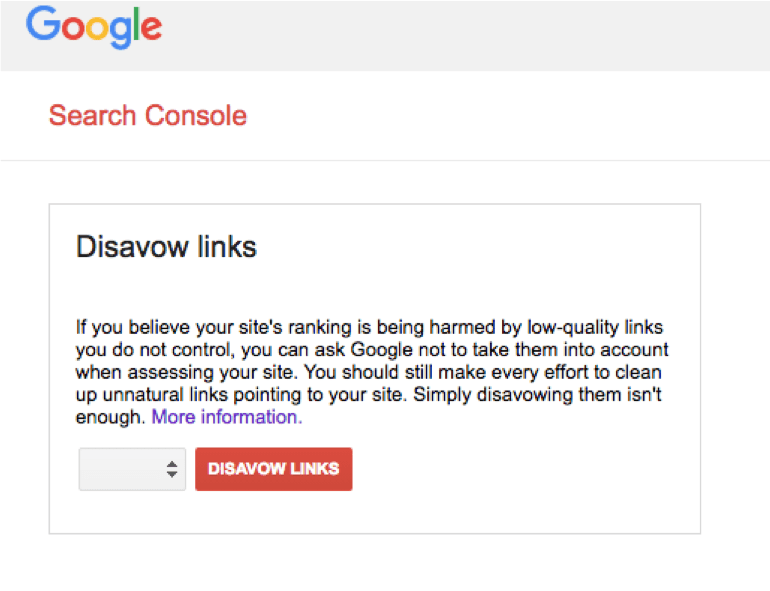There’s more to backlinks than link building and understanding this can help your site see the best results
By now, we are all pretty aware of the importance of backlinks and link building. In fact, it’s probably fair to say that any SEO strategy that doesn’t prioritize building backlinks, is one that will struggle to yield any long-term success.
A cornerstone of SEO, link building is an absolute must for brands aiming to improve organic search rankings and maximize online visibility. Backlinks are still one of the most important SEO ranking signals, and actually, they correlate more with top-ranking pages than any other ranking factor.
Managing SEO playbook
Our digital marketing playbooks helpin you quickly review the main activities you need to work on and get better results from different digital marketing channels. Use our SEO playbook to see what tasks you should prioritize in your strategy and what resources we have to help you achieve your goals.
Access the Managing SEO playbook
This makes it all sound pretty easy - just build a load of links and before you know it you’ll be on the first page of Google, right? If only it were that simple! In reality, there are many more factors to consider when link building, but crucially, it’s all about the quality of your links, the flow of your 'link juice' and the overall health of your backlink profile.
Whilst it’s good to earn plenty of links, it’s easy to fall into the trap of welcoming bad links to your site - and this can seriously harm your SEO. That’s why link detoxing, the process of analyzing, finding and removing 'bad' or low-quality links from your profile, is absolutely essential.
What is defined as a ‘bad’ link?
A 'bad' link is one that is deemed by Google to be of poor quality and is characterized by several things, including:

Domain Authority | Learn SEO - Moz
Domain authority
Domain authority is a metric authorized by Moz that gives Google a strong indication of how credible and trustworthy a website is. Using a combination of factors such as external links and linking root domains to generate an overall score - which then determines its likelihood to rank or be 'authoritative'.
Consequently, sites with low domain authority, e.g. a low-quality blog or directory, may appear spammy or untrustworthy to Google, thus getting a link from one will produce a flow of bad 'link juice' from the referral page to your page.
Paid links
Google tends to take a firm stance on websites buying or selling links. Link schemes are generally seen as an attempt to manipulate PageRank and are a violation of Google’s WebMaster Guidelines.
If found guilty, buying links can result in some pretty hefty penalties. More often than not, sites that sell links will tend to have far more external links than internal, which can raise red flags for Google.
Non-editorial links, link exchanges e.g. "link to me and I’ll link to you", or instances where cross-linking is obviously used purely for the sake of the link, are also bad links in Google’s eyes as they are unnatural.
Over-Optimized Anchor text
Over-optimized or keyword rich anchor text is also a significant link quality factor. Blatant attempts to try and manipulate a link by using keyword-driven anchor text is considered a black hat tactic, and will usually be penalized.
This may be fine to do once or twice (if relevant), but to keep Google happy, it’s recommended that you use your brand name, website URL, or variations of both as your anchor text when guest posting.E.g.
The bad link way: "Company X is a group of experienced London solicitors”
The good link way: “Company X is a group of experienced solicitors based in London.”
Relevancy and Context
The relevance of a link is very important too. You could acquire a link from a site with a DA of 85, but if the domain or the content on the page you are linking doesn’t relate to the page you are linking to, Google may again see this as a 'for the sake of a link' scenario, and punish your rankings as a result.
Remember, the concept of linking is to make the user’s journey as easy and as helpful as possible. Links that are out of context or irrelevant do not provide any value to the user, and therefore are not considered to be a good or ‘quality’ backlink.

Finding your toxic links
Now we know what constitutes a bad link, we can move on to the important part - removing them. To flush away your toxic links, you first need to know how to find them. There are plenty of great tools you can use to conduct a full backlink audit of your site; some are free (e.g. Moz Link Explorer ) and some cost (SEMrush and Ahrefs Site Explorer), but it’s fair to say you pay for what you get.
With each one of these tools, you can simply enter your domain URL and you will be supplied with a whole load of useful data about your backlink profile. Using SEMrush as an example, the 'backlink audit tool' provides data such as:
- Referring domains (new, broken and lost)
- Total number of backlinks
- Anchor text types
- Top anchor texts
- Follow vs Nofollow links
- Overall toxic score
Once you’ve got a list of your backlinks, you’ll need to fish out the ones that could cause issues.
Have a low domain authority
As mentioned previously, domain authority plays a big part in Google’s valuation of a site and the all-important 'link juice' that you get from it. Generally speaking, any website with a domain authority (DA) of below 25 or 30 is probably not worth gaining a link from. In order to secure quality backlinks that are going to boost your rankings, most marketing experts agree that you ideally need to be looking at the 35+ sites.
In light of the recent Moz update, you may have noticed changes to the DA of your referring domains. Moz has developed an improved algorithm that can better identify the credibility of a website; taking into account the number of outgoing links, the quality of traffic, and involvement in link manipulation. You may have earned a backlink with a DA of 65 at the time, but the revised score could be below 10 - so it’s definitely worth having a check!
It’s also a good idea to cross-check other quality metrics such as page authority and trust flow (supplied by tools like Majestic’s Site Explorer) to form an overall analysis of a site.
Have keyword rich anchor text
Most backlink audit tools will supply you with the anchor text used for each backlink. SEMrush, for example, categorizes anchors by 'branded', 'money', 'compound', and 'organic' anchor text.
'Money' anchors are texts that match organic keywords the site is trying to rank for - e.g. if 'company X' (a London based solicitors/law firm) link from another site using the anchor text 'London solicitors' or 'London law firm', Google would see this as an attempt to try and unnaturally manipulate the link (or 'cheat the system'); which is a common Black hat SEO tactic.
Compound anchor texts are those that include the website’s brand name plus a keyword/phrase. Using the same example as above, this could be something such as: 'Company X Solicitors'. These are also considered to be manipulative by Google, so it’s best to avoid.
It seems a shame to waste a potentially valuable link based on anchor text, so what you can do is contact the webmaster of the backlink source and kindly request that they change the anchor text to a branded term e.g. 'Company X' or a more natural phrase such as 'visit their website'. This way, Google cannot punish you and you will benefit from receiving the full value of the link.
Are from a potentially 'toxic' site
Most tools will also provide a score or rating that displays the toxicity of your referring domains. This score will typically indicate whether or not the domain is likely to give you 'bad' link value.
Using SEMrush’s Backlink Audit tool as an example again, sites are analyzed according to over 30 toxic factors including:
- Spam in communities
- Irrelevant sources
- Link networks
- Complementary
- Manipulative links
- Harmful environment
A site is then awarded a 'toxic score' - a metric from one to 100 that indicates the harmfulness of the backlink. It’s generally considered that anything over 45 is a bad link, and should be added to your detox (or disavow) list.

A site that has a high toxic score will typically have a high external link density and a low domain authority. These are the sites you don’t want to be associated with if you are to maintain a balanced link profile.
Flushing away your toxic links
Once you’ve compiled together a list of your harmful/unnatural backlinks, you can flush them out of your system by using Google’s Disavow tool. By submitting a text file containing a list of bad links (in SEMrush this is exportable), you are effectively telling Google to ignore these toxic sites, meaning they cannot negatively impact your website or your rankings.

Alternatively, you can request to remove the links altogether and Google will supply with the webmaster’s contact information if you don’t already have it.
Kickstarting your new diet... full of healthy links
Now you’ve detoxed, it’s time to start linking more healthily. Building a robust backlink profile is the key to a healthy website and successful SEO. Once you know where and how to build quality backlinks, you’ll find yourself spending far less time monitoring your link profile, and instead, you can channel your efforts into positive SEO link building that yields great results for your business.
Aside from the odd spammy link or random link you mysteriously acquire from an unknown source (e.g through duplicated or scraped content) you are responsible for the links you build. Therefore, if you start to realize that your backlink profile is in an unhealthy state, it’s probably time to start rethinking your link building strategy.
It’s important to remember that quality will always overrule quantity. Going forward, this should be your link building mantra if you wish to stay in Google’s good books and climb the SERPs. So bin that bad link juice and start drinking the good stuff - as the SEO doctors will tell you, it’s much better for you!
Ross Ayling is a Digital Marketing Executive at
Champions Digital. As well as graduating with a First Class Honours Degree in Marketing from Nottingham Trent University,
Ross has plenty of experience working for digital agencies; focussing mainly on SEO, content and digital strategy. After learning the best SEO practices in both an academic and vocational environment,
Ross has developed into a budding SEO specialist who is eager to share his thoughts and opinions with the community. You can connect with him via
Linkedin.











